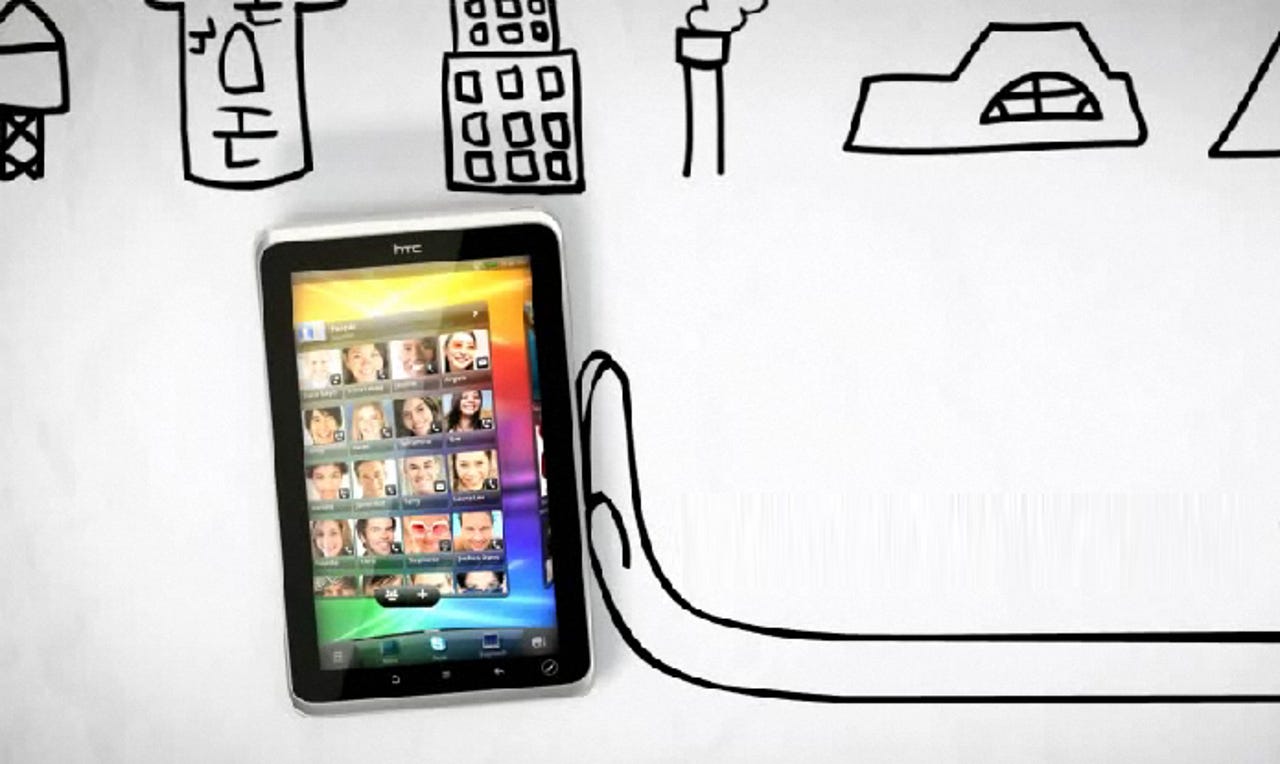In a post-Google-Motorola world, can design save HTC?

You've got to hand it to HTC for impeccable timing.
Just as the smartphone segment of the mobile phone industry positioned itself to overtake feature phones, the obscure Taiwanese handset manufacturer -- "HTC" once stood for the distinctive "High Tech Computer" -- catapulted itself to the forefront of American tech consciousness by latching itself on Google's half-baked but miles-long mobile coattails.
Now the company is a household name, holding its own among a sea of tech legends: Motorola, Samsung, Sony and others.
Jolie O'Dell has a lovely profile of incoming HTC design chief Scott Croyle on VentureBeat this morning, and it's a brief look into part of the company's strategy.
A few key points summarizing the piece:
- Innovation chief and design chief were two separate roles at HTC; now they're one.
- As a result, HTC now has "a major emphasis on design."
- Croyle came to HTC through the acquisition of his former company One and Co., an industrial design firm based in San Francisco.
- "User experience" is a phrase that pops up throughout. The company wants to move away from simply being a tech supplier. Croyle's approach seems to be ensuring that users have as many options as possible for customization. The company has a UX team based in Seattle.
- "Continuity in design" is a top priority, ensuring that packaging, marketing and sales were paid as much attention as hardware and software.
This profile comes at a particularly tumultuous time in the industry. This month, Google scooped up Motorola Mobility, sending shivers down the spines of its other hardware partners; meanwhile, HP's decision to rid of webOS has other handset makers looking.
Straddled between Windows Phone 7 and Google Android, where does that leave HTC? Is design a sturdy enough vessel to carry the company across these choppy waters?
On the one hand, it's great to see a company place emphasis on a strategy that has helped market leader (or not, depending on how you measure) Apple so well.
To quote a Gizmodo screed from just over a week ago (asterisks mine):
I really f**king hate the way you cede so much ground to Apple. You just let them do the sh*t they do. Why couldn't you launch a decent tablet before the iPad? Why are your tablets still sh*ttier than the iPad, for the most part? Why do your laptops still, by and large, look and feel crappier than MacBook Pros? (Exception: ThinkPads.) Why are most of your phones the same f**king way? Does Apple have some secret monopoly on making well designed, well constructed, easy-to-use gadgets? I want to love your products. I really really really do. Just make amazing sh*t. That's the only rule. Make. Amazing. Sh*t.
For all of the desperation, the author's right -- too many companies talk up the concept of design without really embodying it, playing up aesthetics without actually solving problems. Meanwhile, Apple rakes in the revenues by designing products that don't require a manual to enjoy.
In O'Dell's profile, Croyle talks a lot about user experience, but I wonder if he really has the ability to do anything more than produce eye candy. Not in terms of talent, which I'm sure he has oodles of -- rather, in terms of freedom. Sure, the hardware can be nice but with so many parts of the ecosystem outsourced (operating system chief among them) I wonder just how much freedom he has in setting a course.
Our own Jason Perlow previously suggested that HTC look into buying webOS; I won't rehash his opinion here (I did yesterday) but it's a compelling argument from a design perspective. (So is becoming Microsoft's go-to manufacturer for Windows Phone 7, but perhaps Nokia is more likely to occupy this role.)
Owning your own OS not only gives you a competitive hedge against an Android environment that's growing increasingly hostile but also gives you the freedom to design a mobile phone from the inside out, instead of working with an existing foundation. While constraints can be useful in sparking creativity, I wonder if HTC is too bound to its partners to truly innovate on the design front.
Which makes me wonder: if HTC sees design as the best way to put the consumer first, is incremental change enough to ensure its survival in this market?
Related:
- HTC reportedly launching Windows Phone devices: Handy diversification
- If HP spins off webOS group, HTC should buy it
- Google and Motorola Mobility: Like skinny jeans on a linebacker, it's not a good fit
- SmartPlanet: Apple's aversion to chaos (in industrial design)
- SmartPlanet: Four design lessons from the Steve Jobs era
- CNET: The birth of a cell phone
- CNET: Confessions of a cell phone designer
